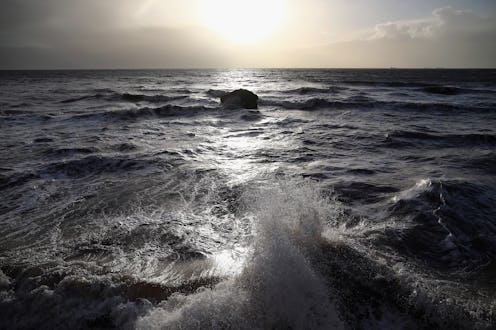News
Scientists Just Discovered Another Ocean
Scientists just found a new ocean, and it's not where you think. According to a new study, a huge amount of water is trapped beneath Earth's surface – enough to fill several oceans. At 440 miles beneath the planet's surface, the water isn't accessible for use right any time soon, but it does give clues as to where all our water came from and where we can go from here.
The water isn't exactly usable in its present state. According to the authors of the study, it's trapped within a layer of a crystalline mineral called ringwoodite, which acts like an extremely hard, subterranean sponge. Because of the way it's trapped, the water isn't even liquid (or ice or vapor), instead taking the form of hydroxide ions containing both hydrogen and oxygen. If it were liquid, though, the researchers say that the pockets of ions could fill the world's oceans.
There's one big catch: the size of the ringwoodite layer beneath the planet's surface has yet to be confirmed. But the scientists did use a network of over 2,000 seismometers around the United States to make a map of Earth's internal structure. They found that material flowing downward melts as it passes through the 400-mile-deep "transition zone" of the planet's insides. "If we are seeing this melting, then there has to be this water in the transition zone," said the University of New Mexico's Brandon Schmandt, a coauthor of the study. "The transition zone can hold a lot of water, and could potentially have the same amount of H2O as all the world's oceans."
The scientists believe their findings are evidence that the water on Earth's surface originally came from somewhere underground – and that the water cycle extends much deeper than many people thought, perhaps even contributing to the stability of oceans today. "The surface water we have now came from degassing of molten rock. It came from the original rock ingredients of Earth," Schmandt said. "How much water is still inside the Earth today relative to the surface?"
